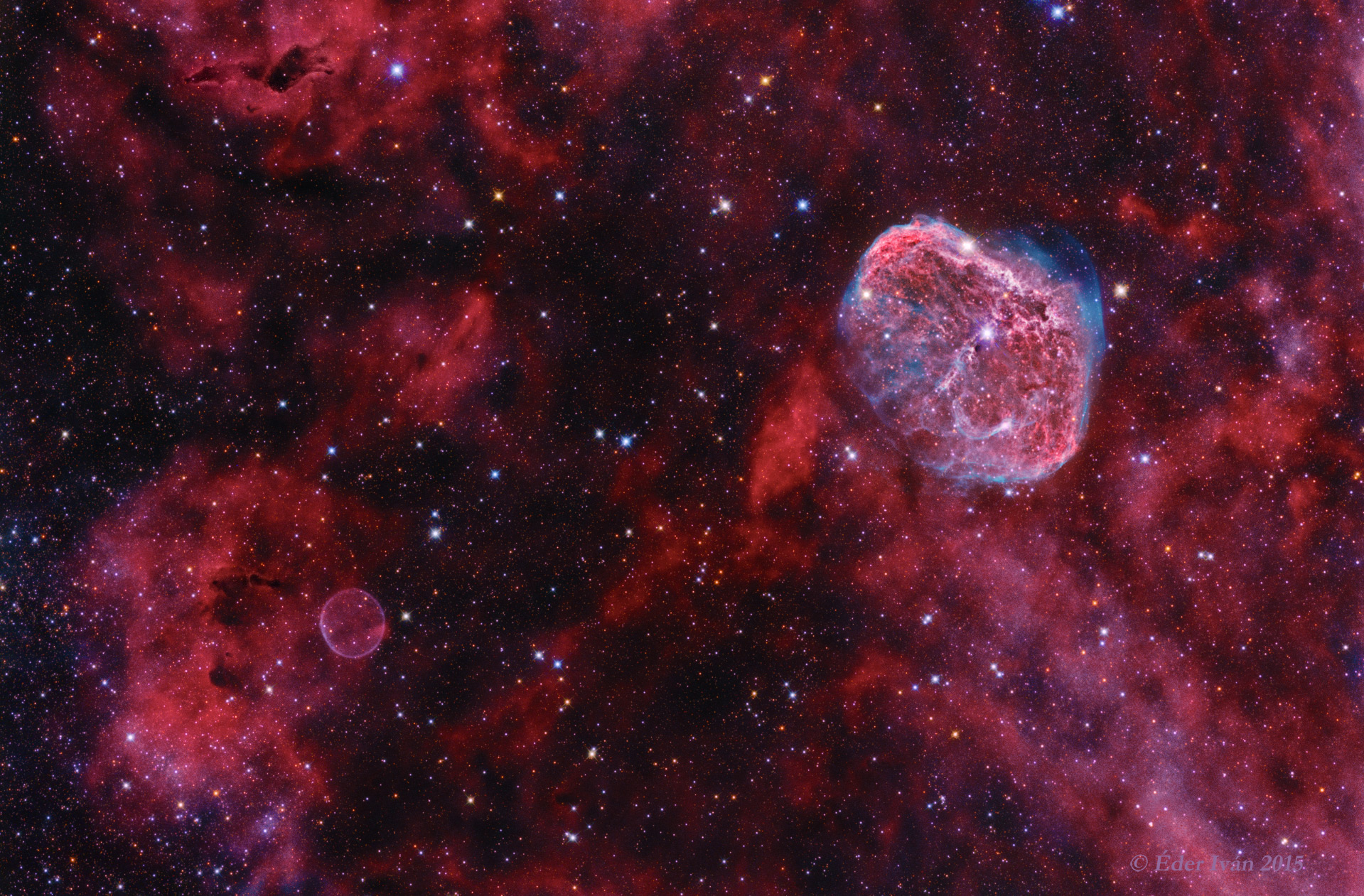
Copyright:Ivan Eder
原文:
These clouds of gas and dust drift through rich star fields along the plane of our Milky Way Galaxy toward the high flying constellation Cygnus. Caught within the telescopic field of view are the Soap Bubble (lower left) and the Crescent Nebula (upper right). Both were formed at a final phase in the life of a star. Also known as NGC 6888, the Crescent was shaped as its bright, central massive Wolf-Rayet star, WR 136, shed its outer envelope in a strong stellar wind. Burning through fuel at a prodigious rate, WR 136 is near the end of a short life that should finish in a spectacular supernova explosion. recently discovered Soap Bubble Nebula is likely a planetary nebula, the final shroud of a lower mass, long-lived, sun-like star destined to become a slowly cooling white dwarf. While both are some 5,000 light-years or so distant, the larger Crescent Nebula is around 25 light-years across.
中文翻譯:
這些氣體和塵埃雲在我們的銀河系恆星場中漂浮,朝著高飛的白天鵝座(Cygnus)移動。在望遠鏡的視野中,捕捉到的有肥皂泡星雲(Soap Bubble Nebula,左下方)和新月星雲(Crescent Nebula,右上方)。這兩個星雲都是在恆星生命的最後階段形成的。新月星雲又稱為NGC 6888,它是在明亮的中央巨星WR 136(Wolf-Rayet 136)將其外層包袱通過強烈的恆星風拋棄的過程中形成的。WR 136以驚人的速度消耗燃料,正處於短暫生命的末期,將以壯觀的超新星爆炸結束。而最近發現的肥皂泡星雲則可能是一個行星狀星雲,是一顆較低質量、壽命較長的類太陽恆星的最後覆蓋,將來會變成一顆緩慢冷卻的白矮星。兩者距離約5,000光年,而較大的新月星雲直徑約25光年。
#肥皂泡星雲 #新月星雲 #白天鵝座 #銀河系 #天文學 #恆星生命 #宇宙奇觀 #超新星 #天文探索 #星雲
來源:NASA每日圖片


